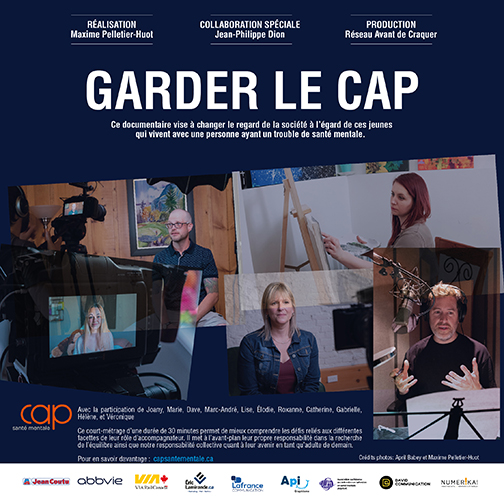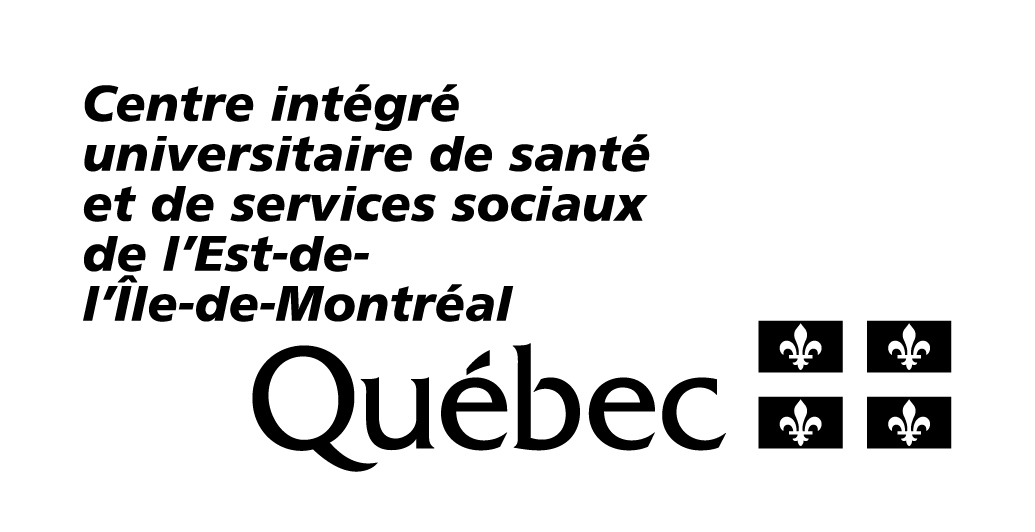Building self-esteem in youths
“If we treat people as if they were what they ought to be, we help them become what they are capable of becoming.” -Goethe
Self-esteem is undoubtedly the most important element in the mental health and psychological balance of an individual. Low self-esteem in a young person is undoubtedly very detrimental to their development and future life. This is why parents should make sure their children develop a strong, solid and healthy sense of self, as this is the foundation for happiness and harmony.
What is self-esteem?
Self-concept is based on a set of perceptions and beliefs that an individual holds about themselves. Self-esteem is defined as the person’s sense of worth as a human being and the anticipation of being accepted or rejected by others. In a way, it is the perception and the confidence in one’s own abilities and oneself.
How does self-esteem develop?
Self-esteem develops very early in childhood and evolves throughout one’s life. Parents have a determining influence on a child’s sense of self-esteem. Additionally, teachers and important people in a young person’s life are also important agents in building the child’s self-esteem. It is largely through the eyes of people in their environment that children, and eventually adults, develop their perceptions and beliefs about themselves. For children, adults are like a mirror in which they perceive themselves. A child learns who they are through the image reflected by their world. Therefore, if adults provide children with a positive self-image, they will develop a healthy sense of self-esteem and confidence. As they grow older and become adults, individuals are generally better at filtering messages and are more capable of discerning what their loved ones perceive about them, though the mirror effect remains present. This is why learning how to filter information in order to avoid damaging self-perception is so important.
Do you know what an estimometer is?
It is a device in our brain that measures self-esteem. It is a dynamic tool that fluctuates constantly according to positive and negative perceptions filtered through our personal lens. If our lens is not equipped with an anti-reflective coating to prevent viruses affecting self-esteem from entering, the positive is cancelled out by the negative and the individual feels sullen. NOTE : filling up on positivity to maintain your balance is important. The positive cancels and annihilates the negative.
In order to verify where your child is in terms of self-esteem, we suggest that you answer the following questionnaire.
1. When your child speaks about themselves, do they tend to mention their limitations, weaknesses and flaws rather than their potential, strengths and qualities?
Yes
No
2. When the child receives a compliment or does a good deed, do they tend to minimize or neutralize the positivity by talking about their limitations, weaknesses or flaws?
Yes
No
3. Does the child see themselves in a negative light, think they are stupid, unintelligent, etc.?
Yes
No
4. Is the child insecure and lacking in confidence?
Yes
No
5. Does the child often compare themselves to others and sees themselves as inferior to their peers?
Yes
No
6. Does the child lack autonomy and often say that they are unable to do things that are appropriate for their age?
Yes
No
7. Does the child fear new things or have difficulty adapting or approaching new people (shy, embarrassed, fearful, etc.)?
Yes
No
8. Does the child react negatively to challenges or fear failure or disappointing their parents?
Yes
No
9. Does the child feel that their parents, friends or other significant people in their environment do not accept them as they are or reject them?
Yes
No
10. Is the child negative and defeatist?
Yes
No
11. Does the child have unrealistic expectations for themselves? Do they overestimate their abilities and have difficulty identifying their limitations?
Yes
No
12. Does the child overvalue the positive aspects of their personality and behaviour to defend against negative traits and inappropriate actions?
Yes
No
13. When interacting with siblings or peers, does the child show contempt for others as if to prove that they are superior to or better than them?
Yes
No
14. Does the child blame others and refuse to admit to wrongdoing?
Yes
No
15. Is the child more focused on appearance than who they are as a person (values, qualities, etc.)?
Yes
No
For questions 1 to 10.
If you answered yes to several questions, it is very likely that your child has low self-esteem. You will need to invest more heavily in this aspect of their personality. However, if you answered “no” in most cases, all you have to do is continue to build their self-esteem so that it remains strong and healthy. If your child fits statements 11 to 15 inclusively, their self-esteem may be overvalued. However, some people appear very confident when they are in fact camouflaging low self-esteem.
Self-esteem: the key to success!
Low self-esteem in a young person can negatively impact the development of their personality. In fact, despite having good potential, some young people find it difficult to succeed because their lack of self-confidence prevents them from realizing their potential. Doubt, fear of failure and insecurity prevent the child from taking risks, taking charge and moving forward. Low self-esteem is like having a ball and chain around your ankle that holds you back. By feeding negative perceptions and anticipation, the person forges an inner prison. Sometimes the individual loses motivation to do anything because they are convinced that there is no point in trying because they are just going to fail. Additionally, low self-esteem can lead to the following consequences :
- Learning disabilities
- Low socialization
- Insecurity
- Dependency, lack of autonomy
- Fear of risk, failure, etc.
- Low sense of control over one’s life
- Gaps in problem-solving abilities
- Distrust of others
- Difficulty in making decisions
- Stress
- Suggestibility
- Embarrassment, shyness
- Negative outlook on the future
- Risk of using food, drugs, gambling or other addictions to cope with stress and emotions
- Risk of self-destructive behaviour
On the other hand, with strong and healthy self-esteem, a young person is better able to move forward in life, face challenges, manage stress and deal with problems. Self-confidence is often essential to succeeding in our endeavors.
The following is a list of things that can negatively affect the development of self-esteem :
- Use of comparison and competition
- Overprotection (This confirms the child’s inability and prevents them from becoming autonomous and responsible.)
- Negative judgment, pejorative labels, denigrating and devaluing the child, hurtful words, humiliation, etc.
- Degrading labels placed on the child
- Lack of investment by parents and relatives in their interpersonal relationship with the child
- Neglect and abuse of the child
- Disproportionate demands and expectations placed on the child by parents and others
- Lack of stimulation to help the child develop
- Guilt
- Non-acceptance of the child
However, there are ways to build self-esteem in youths.
- Improve our own self-esteem
- Encourage, praise, recognize and emphasize the child’s strengths and positive qualities
- Stimulate their development and help them increase their skills and strengths
- Encourage autonomy and responsibility by showing them trust
- Encourage them to take on appropriate challenges
- Help them become aware of their skills, talents, abilities and progress, and help them learn from their mistakes
- Respect the child
- Invest in your interpersonal relationship with the child
- Use considerate words and behaviour with the child
- Unconditional acceptance: Feel and show your appreciation for the child when you are caring for them
- Marvel at their achievements and value them
- Encourage the child to discover ways to overcome their shortcomings and to learn to live with their limitations
- Take time to listen to the child and do activities with them
- Encourage the expression of emotions
- Encourage contexts in which they can experiment
- Assign responsibilities to the child
- Help them find their own ways to solve their problems
- Assure the child that it is them and not another child that you would have wanted
- Have realistic expectations of the child
- Encourage the child to control their own actions and make amends when they break the rules. Exercising parental authority and setting boundaries are proof of love.
BEING CRAZY ABOUT CHILDREN IS A GOOD WAY TO BUILD SELF-ESTEEM!
In addition to this article, here are two stories that I have written for parents. As with children, stories allow adults to reflect and identify and often lead to changes in the way they perceive things. So, enjoy being lulled into dreamland!
THE TALE OF THE LITTLE HARE WHO FELT EXHAUSTED
In a cute little burrow on the edge of a fir forest on the Saguenay River lived a little hare who had worked so hard that he felt exhausted.
Ever since he was a child, Rapido would speed through the forest to impress his parents. He was known by all as the young hare with the most spectacular jumps of his age group. His desire to please was so great that even when he felt tired, Rapido kept running, sometimes until he lost his breath. Rapido always tried to be the best at everything in life. For example, in school, he worked so hard that he was at the top of his class. Rapido was also seen as a talented musician when he attended violin lessons and was the best player on his hockey team. Rapido also tried to be nice to his friends and those around him at all times. Everyone admired Rapido and thought he was a model little hare.
One day, a strange feeling of uneasiness came over Rapido… He felt extremely exhausted. This fatigue was accompanied by a profound lack of interest and motivation in everything that he used to love. School, jumping, music, sports and even running. Nothing appealed to him. His parents were very disappointed and did not understand what could be wrong with their dear little Rapido.
As Rapido desperately tried to help his parents pick carrots, he heard a strange voice coming from the bush. As he bent down, he saw a carrot dancing and hopping… like a young hare. In addition to spinning like a weathervane, the strange carrot was also talking.
“Hi Rapido,” said the mysterious talking carrot. “I’m sad to see that you’ve lost all the energy you used to have. However, in order to get back all the joy you lost, you’ll need to give your parents a message.”
“What should I tell them?” replied Rapido.
“Rapido, your parents must learn the wise words that allow young hares to be happy. If you take this advice, your energy and zest for life will return.”
“OK, so what are these magical words?” Rapido said in a tone that showed his impatience.
The talking carrot went on: “Love me for who I am, not just for what I do.” Immediately after delivering his message, the talking carrot ran away into the meadow.
Rapido joined his parents. He was quick to talk to them as soon as he arrived home. Rapido’s parents saw his eyes light up as he spoke the words of wisdom shared by the talking carrot. It clicked for them and they immediately understood Rapido’s message.
Since then, Rapido lives peacefully and plays as he pleases. Whether he is playing or working, his parents show Rapido that they are proud of him and tell him that they are happy to have him as their son. Rapido no longer feels tired. He has so much energy that other hares are drawn to him because of his incredible vigor. Rapido never forgot about the talking carrot. Before expressing his expectations of the people around him, he made sure he knew them well. This allowed him to show them respect and help them develop their skills and potential.
THE TALE OF THE LITTLE HEN WHO LOST HER FEATHERS
Once upon a time in the Kingdom of Saguenay, in a pretty barnyard, near a pond where a raft of ducks and loons were swimming, lived a little red hen who was losing her feathers.
In her early days, while warmly curled up in her egg, the shell protecting Rouquine had nearly shattered when it fell from the nest. Terrified by this unfortunate accident, her parents watched over Rouquine with great care. Mother hen constantly shielded her so that nothing would happen to her. Her daddy, the rooster, protected her when other barnyard residents approached, as if she were about to fall prey to a predator.
When she was just a little chick, Rouquine was very appreciative of her parents’ loving care. However, as she grew older and started becoming a hen, Rouquine began to feel uneasy in her skin. Like an ostrich, she often hid her head in the sand. This made Rouquine the laughingstock of the whole barnyard. The geese would take advantage of any opportunity to peck her on the back while laughing and chattering. Gradually, Rouquine lost her red feathers. Her parents soon became very worried and wondered what could be the cause of their beloved child’s condition. They saw many specialists but none of the medicines prescribed brought back her health… or her feathers.
One day, when mother hen and father rooster were wallowing in despair, a mysterious hen, who could fly as well as a gull, appeared in the barnyard. Seeing Rouquine’s condition, the super hen showed her astonishment. Her eyes became as wide as saucers. The super hen quickly began a long discussion with the little red hen. Rouquine told her about the overwhelming insecurity she felt in her heart. Although she longed to become an adult, she had been so overprotected that she felt unable to cope with life. Rouquine was overwhelmed with anxiety and fear, so much so, that she was losing her feathers.
Immediately after her discussion with the little featherless bird, the super hen went to talk about the situation with mother hen and father rooster. To cure Rouquine of the terrible discomfort she felt, the super hen advised the parents of various tricks to help improve the little red hen’s self-confidence. One of the ways to help was to develop strategies for coping with stress and show her ways of solving her own problems. She had to learn to become independent. By giving Rouquine responsibility, she could prove to herself that she was trustworthy, which would help with her self-esteem.
Just a few weeks after applying the super hen’s tactics to cure Rouquine, a few feathers began to appear on her back. A few months later, Rouquine had become the most beautiful hen in the barnyard. This event remained engraved in the memory of the region’s birds for a long time. However, the super chicken was never seen again. But ever since her visit, all the mommy hens and daddy roosters raised their children with the skills they needed to thrive independently.
Author : Claude-Michel Gagnon, psychologist






























